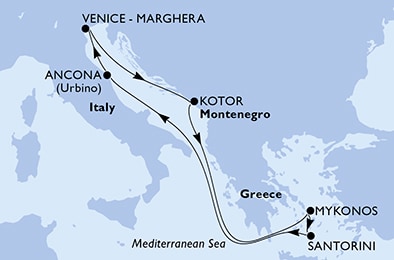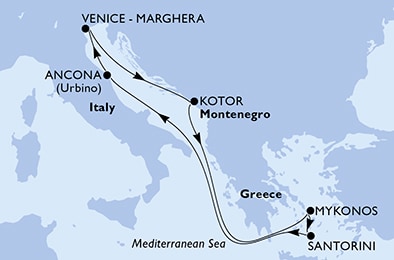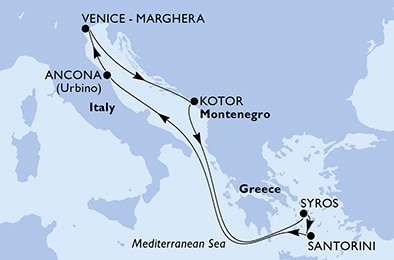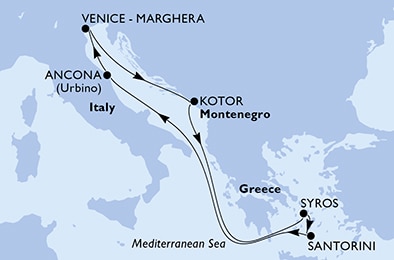
Port Ancona
Ancona, a historic port city located on Italy’s Adriatic coast, is the capital of the Marche region and a hidden gem for travelers seeking authentic Italian charm. Known for its stunning sea views and rich history, Ancona boasts landmarks such as the Ancona Cathedral (Cattedrale di San Ciriaco), perched on a hilltop overlooking the city and offering breathtaking panoramas of the coastline. The city’s ancient roots can also be explored at the Arch of Trajan, a well-preserved Roman monument near the bustling harbor, and the National Archaeological Museum of the Marche, which houses fascinating artifacts from prehistory to Roman times.
In addition to its historical significance, Ancona offers visitors a perfect blend of coastal relaxation and Italian culture. Its beaches, such as Passetto Beach, are ideal for sunbathing and swimming, while the lively city center is filled with charming piazzas, cafes, and shops. Ancona is also a gateway to the Conero Riviera, a stretch of coastline featuring crystal-clear waters, secluded coves, and stunning natural landscapes like Monte Conero. With its combination of history, seaside beauty, and authentic Italian atmosphere, Ancona is a wonderful destination for those looking to explore Italy beyond the usual tourist hotspots.
History
Ancona, a historic city located on the Adriatic coast of Italy, serves as the capital of the Marche region. Its origins date back to around the 4th century BCE, when it was founded by Greek settlers from Syracuse, who named it Ankon, meaning "elbow" in Greek, due to the shape of the coastline. The city's strategic location made it an important port for trade and navigation. During the Roman Empire, Ancona flourished as a prominent maritime hub, exporting purple dye and other goods. A notable remnant of this period is the Arch of Trajan, built in the 2nd century CE to honor the Roman Emperor Trajan for expanding and fortifying the port.
Throughout the Middle Ages, Ancona maintained its significance as a maritime republic, rivaling cities like Venice and Genoa in trading power. In the 16th century, it came under the control of the Papal States, which led to both economic challenges and architectural enrichment, as seen in landmarks such as the Ancona Cathedral (dedicated to Saint Cyriacus). Today, Ancona is renowned for its bustling port, historic monuments, and its role as a gateway to the Adriatic and beyond, blending its ancient heritage with modern vibrancy.





 With bus transport to the port
With bus transport to the port















